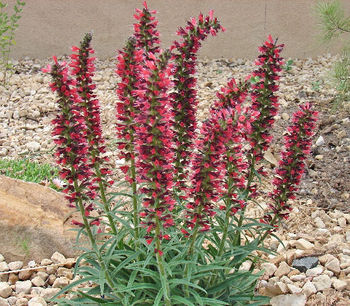Difference between revisions of "Echium amoenum"
From Wikiwel
(→Special Precautions of Echium amoenum) |
|||
| Line 2: | Line 2: | ||
Other Names : Red Feathers, Kaukasischer Natternkopf, bee flower | Other Names : Red Feathers, Kaukasischer Natternkopf, bee flower | ||
==Special Precautions of Echium amoenum== | ==Special Precautions of Echium amoenum== | ||
| − | *There are lots of potential side effects associated with Echium amoenum oil. Headache, rashes, nausea (having the | + | *There are lots of potential side effects associated with Echium amoenum oil. Headache, rashes, nausea (having the oil with food lessens this symptom), and stomach upset. |
*More serious conditions include interaction with anti-clotting drugs. Unless the red feather plant oil is manufactured properly, it might contain substances that damage the liver. | *More serious conditions include interaction with anti-clotting drugs. Unless the red feather plant oil is manufactured properly, it might contain substances that damage the liver. | ||
*It is also suggested not to have this oil before general anesthetic. | *It is also suggested not to have this oil before general anesthetic. | ||
Revision as of 06:08, 11 November 2018
Other Names : Red Feathers, Kaukasischer Natternkopf, bee flower
Special Precautions of Echium amoenum
- There are lots of potential side effects associated with Echium amoenum oil. Headache, rashes, nausea (having the oil with food lessens this symptom), and stomach upset.
- More serious conditions include interaction with anti-clotting drugs. Unless the red feather plant oil is manufactured properly, it might contain substances that damage the liver.
- It is also suggested not to have this oil before general anesthetic.
Health Benefits and uses of Echium amoenum
Echium amoemum has a long history in traditional Iranian plant medicine. A range of constituents have been identified in the petals, which include saponins, flavonoids, unsaturated terpenoids, sterols, alkaloids (including pyrrolizidine alkaloids), and volatile oils.
- The flowers and leaves have been used traditionally to treat heart disease, the common cold, and other pulmonary conditions.
- the petals are used for their effects on the nervous system, as they have analgesic, anxiolytic and sedative actions.
- Anxiety : In traditional Iranian medicine, decoctions of the petals are consumed for the duration that the anxiety or stress symptoms are experienced, suggesting that this herbal medicine may be suitable for more chronic forms of anxiety.
